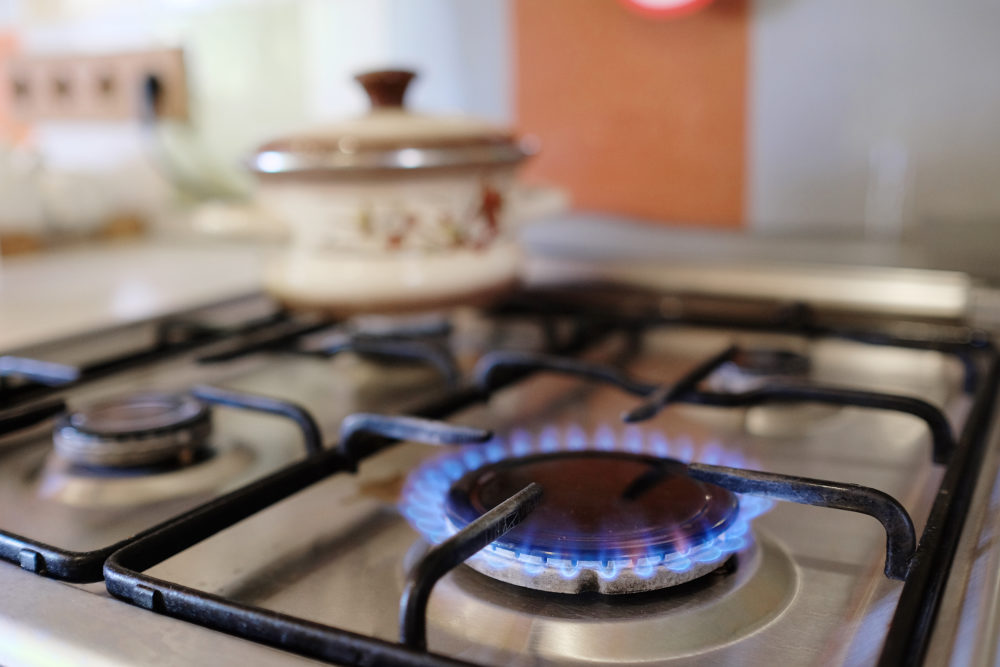Study Links 50,000 Cases of Childhood Asthma to Propane and Gas Stoves
Researchers found those living in smaller homes faced higher concentrations of nitrogen dioxide exposure from propane and gas stoves.

A growing body of research has been published in recent years that suggests cooking with gas or propane stoves increases a family’s exposure to dangerous nitrogen dioxide, and a new study estimates that roughly 50,000 current cases of childhood asthma could be attributed to the appliances.
Gas stoves release nitrogen dioxide when natural gas is burned at high temperatures, and high exposure is known to irritate the airways and worsen respiratory problems. It has also been linked to the development of asthma and chronic lung disease.
In a report in the journal Science Advances on May 3, researchers warn that the levels of nitrogen dioxide families are exposed to in homes that use natural gas or propane stoves for cooking is roughly 75% of the safe level of exposure set by the World Health Organization (WHO) guidelines.
Gas Stove Health Concerns
In recent years, there have been discussions among regulators and health experts about ways to limit the use of gas stoves, due to the long-term health risks they may pose. However, the issue became a political lightening rod last year, leading some lawmakers to introduce legislation that would prevent any gas stove bans.
In early 2023, Australian researchers evaluated the side effects of gas cooking on children, estimating that roughly one in every eight cases of childhood asthma could be caused by indoor pollution from gas stoves.
Other research has found that natural gas stoves emit more benzene than secondhand smoke, potentially exposing residents to high levels of the toxic chemical, which is known to increase the risk of leukemia and other types of cancer.
Researchers have also found that indoor air pollution levels from benzene dropped significantly when gas stoves were replaced with electric induction stoves.
Propane and Gas Stove Asthma Risks
In this latest study, researchers sought to explore the impact of propane and gas stove exposures among different U.S. demographic groups, finding that individuals living in smaller homes are exposed to much greater levels of nitrogen dioxide from gas stove use than those living in larger homes.

Did You Know?
AT&T Data Breach Impacts Millions of Customers
More than 73 million customers of AT&T may have had their names, addresses, phone numbers, Social Security numbers and other information released on the dark web due to a massive AT&T data breach. Lawsuits are being pursued to obtain financial compensation.
Learn MoreResearchers from Stanford University estimated nitrogen dioxide emissions from more than 100 homes, accounting for different conditions like open windows, gas burners on low compared to high, and range hoods on or off. They also used data from the U.S. Energy Information Administration survey, which includes information about how often people use their stoves and what indoor ventilation they have, to estimate annual exposure to nitrogen dioxide.
The study’s data indicated that people living in homes under 800 square feet were exposed to four times more nitrogen dioxide levels over the long term compared to those living in homes larger than 3,000 square feet.
Additionally, researchers determined that American Indian/Alaska Native homes face 60% more nitrogen dioxide exposure, while Black and Latino households experience 20% more.
High Levels of Nitrogen Dioxide Released
According to the findings, gas and propane stoves increase long-term exposure to nitrogen dioxide by four parts per billion on average across the United States, a volume that is 75% of the WHO safe exposure limits of 5.3 parts per billion.
Researchers estimated the increased exposure to nitrogen dioxide was responsible for roughly 50,000 current cases of childhood asthma.
The researchers also determined the short-term exposure to nitrogen dioxide seen with typical gas stove use exceeds limits set by WHO and the U.S. Environmental Protection Agency.
There are more than 40 million gas stoves in the United States.
Researchers warn that simply leaving the kitchen may not be enough to protect households from nitrogen dioxide exposure, especially since the high levels were recorded throughout the homes, not just in the kitchen.
They recommend opening windows when using gas stoves, and installing range hoods that vent the exhaust outside and do not recirculate it inside, to help reduce levels of nitrogen dioxide and other harmful emissions.





0 Comments